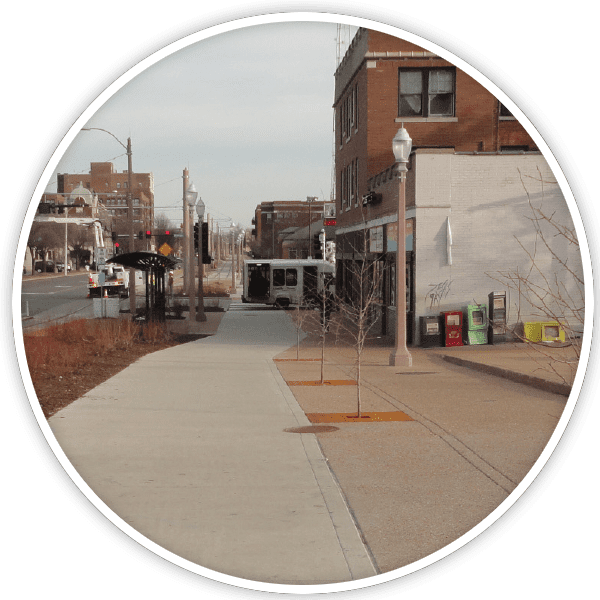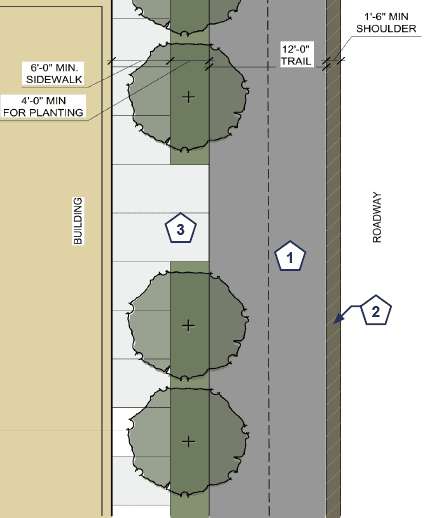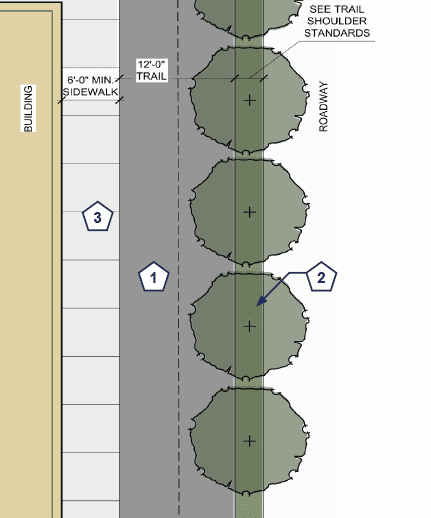Urban areas have unique challenges for greenway implementation. Narrow right-of-way conditions often call for shared sidewalk and trail solutions that can create safety challenges.
 It is critical that trails be well-defined and distinct from pedestrian walkways, especially in areas with high volumes of pedestrian foot traffic where stores and businesses line the back of a sidewalk. While these standards should be considered minimum expectations, it is standard practice that existing sidewalk width should not be sacrificed – where possible, roadway width or parking lane reduction is preferable.
It is critical that trails be well-defined and distinct from pedestrian walkways, especially in areas with high volumes of pedestrian foot traffic where stores and businesses line the back of a sidewalk. While these standards should be considered minimum expectations, it is standard practice that existing sidewalk width should not be sacrificed – where possible, roadway width or parking lane reduction is preferable.
- Visual separation of the trail is critical, since cyclists present a significant danger to the local movement of pedestrians in and out of storefronts. The use of different, highly contrasting pavement is the best indicator.
- Asphalt is recommended for the trail in this condition, as it is more recognizable as a transportation feature. In areas of higher congestion, striping should also be introduced.
- Where greater right-of-way is available, a planting buffer should be introduced between the sidewalk and the trail for better separation. Planting buffer should be at grade with sidewalk and trail to limit vertical hazards for trail users, especially cyclists.
- Lighting and other vertical elements should be placed along the roadway where possible to create greater separation from vehicles.
- Along roadway, tree soil volume needs may require use of structural cells or structural soil. Root barrier may also be required. See Trees.
HIGH-VOLUME TRAFFIC CONDITIONS |
LOW-VOLUME TRAFFIC CONDITIONS |
COMPONENTS: Click below for more information on each component.

